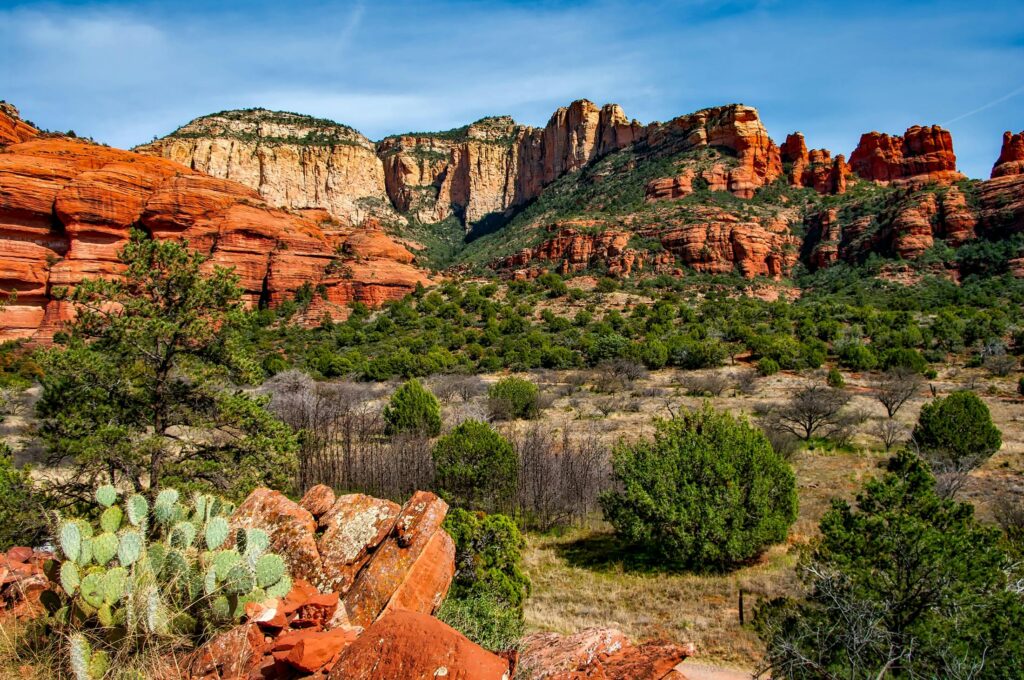Gardening in dry, desert-like environments might seem like an uphill battle, but it’s actually a chance to be resourceful and deeply connected to the land. In arid climates, where rainfall is limited, and summer heat can be extreme, sustainable gardening becomes more than a choice – it becomes a necessity. By working with nature rather than against it, you can create a flourishing garden that conserves water, nurtures the soil, and supports the local ecosystem.

Understanding the Unique Challenges
Arid environments bring with them a set of very specific challenges:
- Scarce water resources that make traditional watering methods inefficient.
- Intense sunlight and heat, which can scorch plants not adapted to the climate.
- Poor or sandy soils, which drain quickly and lack nutrients.
- High evaporation rates, meaning water disappears before plants can use it.
But these challenges can be addressed with smart planning, native plant choices, and efficient water use.
Choose Native and Drought-Tolerant Plants
Your first step toward a sustainable garden is selecting plants that naturally thrive in desert conditions. Native plants are not only adapted to the local climate and soil, but they also require far less maintenance once established. Some great drought-tolerant choices include:
- Agave – A bold, architectural plant that stores water in its thick leaves.
- Desert Marigold – Bright yellow blooms that attract pollinators and need little water.
- Red Yucca – Long-blooming and attractive to hummingbirds.
- Lantana – A hardy flowering plant that thrives in full sun and poor soil.
By designing your landscape around these tough species, you reduce the need for irrigation, fertilizers, and pest control.
Design with Water Efficiency in Mind
Efficient water use is at the heart of sustainable gardening in arid zones. Consider applying the principles of xeriscaping – a landscaping method that focuses on water conservation. Here are a few tips:
- Group plants by water needs so you don’t overwater low-water plants just to keep thirstier ones alive.
- Use drip irrigation instead of sprinklers. It delivers water directly to the base of the plant, minimizing evaporation and runoff.
- Water early in the morning or late in the evening to reduce moisture loss through evaporation.
- Collect rainwater using barrels or cisterns, even if rain is infrequent – every drop counts.
Mulching is also critical. A 2- to 3-inch layer of organic mulch (like bark or wood chips) helps insulate soil, reduce water evaporation, and suppress weeds. Inorganic mulches like gravel can also work, especially around native plants that prefer dry roots.
Improve and Protect Your Soil
Healthy soil is key to plant success, even in the desert. Many arid soils are low in organic matter and compacted. You can improve soil structure and moisture retention by:
- Adding compost or well-rotted organic material to planting areas.
- Avoiding frequent tilling, which breaks down soil structure and increases water loss.
- Letting fallen leaves and plant debris decompose naturally, returning nutrients to the soil.
In raised beds or containers, be sure to use soil mixes designed for drought-tolerant or cactus plants to avoid soggy roots.
Shade and Wind Protection Matter
Sun and wind can rapidly dry out both plants and soil. Incorporating structural elements like walls, fences, or even clusters of tall plants can protect more delicate species. Also, consider adding shade structures like pergolas or shade cloth during peak heat months. Even partial shade can reduce plant stress and water needs Strategic planting – placing taller, hardier plants to the west or south of smaller ones – can also offer natural protection from the harshest sun.
Attract Wildlife That Supports the Garden
Pollinators and beneficial insects are essential to a balanced desert garden. Bees, butterflies, hummingbirds, and even lizards help pollinate plants and control pests. To support them:
- Plant flowering species like penstemon, salvia, and desert milkweed.
- Avoid chemical pesticides, which harm both pests and beneficial creatures.
- Include a shallow water source, like a birdbath or rock basin, for wildlife to drink from safely.
By welcoming nature into your garden, you create a self-sustaining system that needs less human intervention over time.
Final Thoughts
Sustainable gardening in arid climates is all about working smarter, not harder. By choosing the right plants, designing with water efficiency in mind, and supporting soil and wildlife health, you’ll build a garden that thrives even under tough conditions. Not only will your landscape be more resilient and easier to maintain, but it will also play a small but meaningful part in conserving water and protecting the desert environment. Sustainable doesn’t mean sparse – it means smart, beautiful, and in harmony with nature. Would you like a version with internal links for SEO or call-to-action suggestions for affiliate products like drip irrigation kits or desert-friendly mulch?
